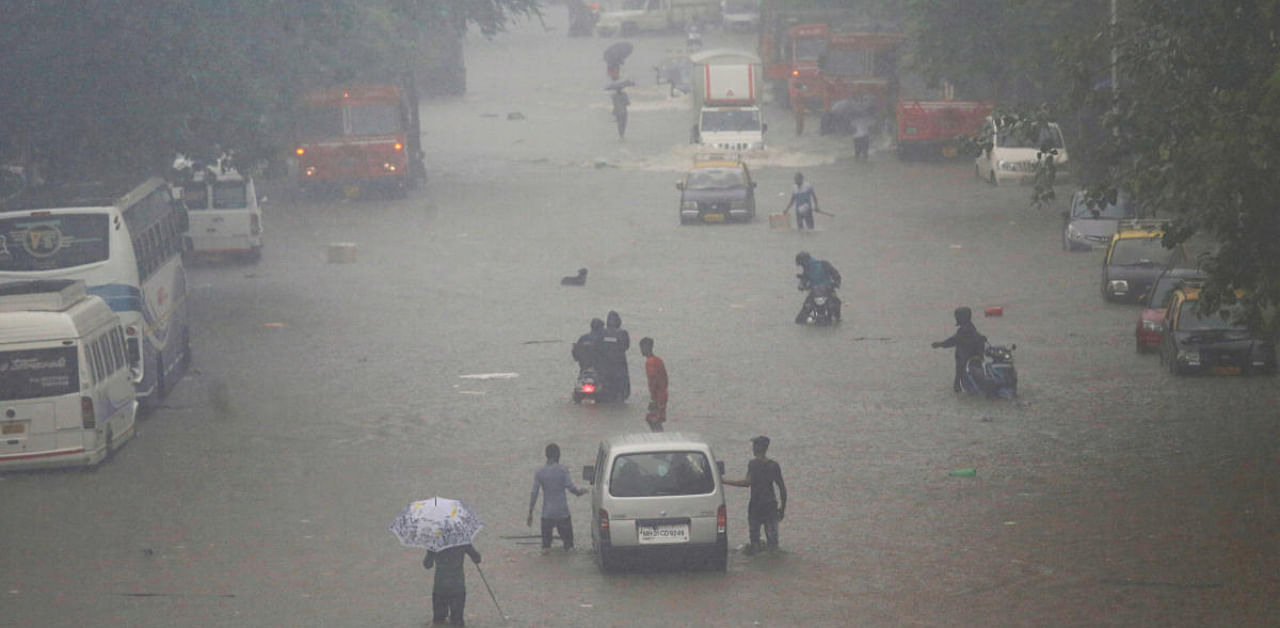
Unregulated construction with no regard for natural topography, an overburdened drainage system, loss of green cover — all conspire to make Indian cities and their residents highly vulnerable to flooding.
With each passing year after Mumbai's deadly deluge of 2005, which pointed to the city's poor drainage infrastructure and disappearing waterbodies, more and more cities are getting drowned in floods.
Last month, an intense spell of rain in Hyderabad exposed the crumbling drainage infrastructure of the city resulting in the death of 50 people.
In 2008, heavy rainfall exposed dysfunctional urban planning and silted water channels in Patna. The catastrophic Chennai floods in December 2015, which left 280 people dead, was caused by the encroachment of lakes and riverbeds.
Though urban floods are blamed on unprecedented, intense bursts of rainfall, studies indicate that the damage caused is largely due to unplanned urbanisation.
A recent study showed how the loss of waterbodies is directly linked to major flood events in 20 major cities in the country.
From mapping surface waterbodies, constructing stormwater drains and installing sensors, the urban bodies are responding to the situation at their own pace. But in no city have the administrative measures matched the gravity of the situation. For instance, implementation of provisions like rainwater harvesting are poor, as both users and the enforcement agencies don't show interest.
Take the case of Bengaluru. The city has been inundated four times since 2005, while several areas of the city drown every year. The latest instance took place last month. Like in other metropolises, all it takes is a few hours of incessant rains for entire localities to become waterlogged.
Also Read | Hyderabad floods: A disaster years in the making
In response to the problem, the Bruhat Bengaluru Mahanagara Palike (BBMP) along with the Karnataka State Natural Disaster Monitoring Cell (KSNDMC) and Indian Institute of Science (IISc) has taken up a ‘Flood warning system’ across Bengaluru.
“A total of 211 flood-prone areas were identified, out of which 58 were found to be severely vulnerable to floods. All these places will be fitted with sensors. The moment the drain gets filled with 75% water of its carrying capacity, it will send alerts to the authorities for further action,” explained an engineer from the BBMP.
Stormwater drains
However, projects like this are just band-aid solutions. Engineers say that the main problem is that the drainage network, consisting of storm water drains (SWDs) or primary drains, secondary and tertiary drains, has been severely compromised. “The storm water drains that once linked all the lakes have lost their continuity due to encroachment,” says Captain Raja Rao, former Secretary of the Minor Irrigation, Ecology and Environment Department in Karnataka. This 842-km long network, which once served as irrigation canals, has now become the city’s sewage network.
The BBMP's long-standing plan to remodel this network by building retention walls has seen half of the work being completed.
“The stormwater drains that once linked all the lakes have lost their continuity due to encroachment,” says Captain Raja Rao, former Secretary of the Minor Irrigation, Ecology and Environment Department in Karnataka. This 842-km long network, which once served as irrigation canals, has now become the city’s sewage network.
The BBMP's long-standing plan to remodel this network by building retention walls has seen half of the work being completed.
“The insatiable greed for land and unbridled urbanisation, damaging water-bodies, wetlands and flood-plains are at the root of this problem,” says Capt Raja Rao.
In the past few decades, the city has grown to four times its size, from 250 sq km to 800 sq km today. Since the 1970s, the green cover in the city has shrunk from 68% to less than 3% today; its wetlands have reduced by half and the built-up area has shot up from 7% to more than 90%.
Several architects and hydrological experts say the idea of ‘urban floods’ in Bengaluru is exceptional, considering its natural topography. “A city like Bengaluru, located at a high altitude and with four valleys, should not face problems to this extent,” says S Vishwanath, urban planner and water conservation expert.
Rampant encroachment
Raja Rao states that wetlands across Bengaluru have lost the ‘flood absorbing capacity’ due to increased human activities and damages to their contours. Prahlad, Chief Engineer (SWD) of the BBMP said, “Concretisation of the city has reduced the rate of water percolation into the earth from 60% to 20%. Similarly, the run-off of the excess water has doubled, from 40% to 80%.”
In 2016, a report by a 11-member House committee headed by former speaker K B Koliwad had found that 4,533 out of 27,899 acres of tanks in the city had been encroached. Since then, the action against the offenders, which include government agencies, has been sporadic.
"The cascading system of more than 1,000 lakes we had in Bengaluru – most of them have vanished. The ones that remain are either silted up, encroached upon or filled with sewage even in the dry season," says A R Shivakumar, a former scientist with the Karnataka State Council for Science and Technology, Indian Institute of Science, Bengaluru.
Captain Raja Rao feels the involvement of the judiciary in the entire process would ensure some noticeable changes. “Till date, the state government has been successful in evicting only 1,890 out of the 2,626 identified encroachments. In Kerala, the Supreme Court had to intervene and in less than a few days, the government brought down the buildings on encroached land. Why can’t the same be replicated in Bengaluru?” he asks.
Several experts demanded that there has to be a High Court-appointed monitoring committee to oversee these encroachment eviction work.
Water contamination
The other problem is contamination. "The sub-soil water is already mixed with sewage especially in places where the groundwater level is high. The groundwater level in several places is always very high even without rainfall. But unfortunately, it is not usable because it is contaminated water," says Shivakumar.
Also Read | Chennai's story of inundation and water scarcity
S Vishwanath suggests that the existing rainwater harvesting rules be made even more stringent to ensure mandatory harvesting of rains even in 30X40 dimension plots.
“Bengaluru has about two million buildings. If every site and building harvests rainwater, it will minimise the impact of flooding,” he commented.
Some other suggestions by experts include leaving at least 20% of the area on a 40X60 plot bare, without any concrete cover; leaving up to 25% of the footpath bare, to ensure the water seeps into the earth and stopping the concretisation of the bottom of drains, to allow for the percolation of water.
